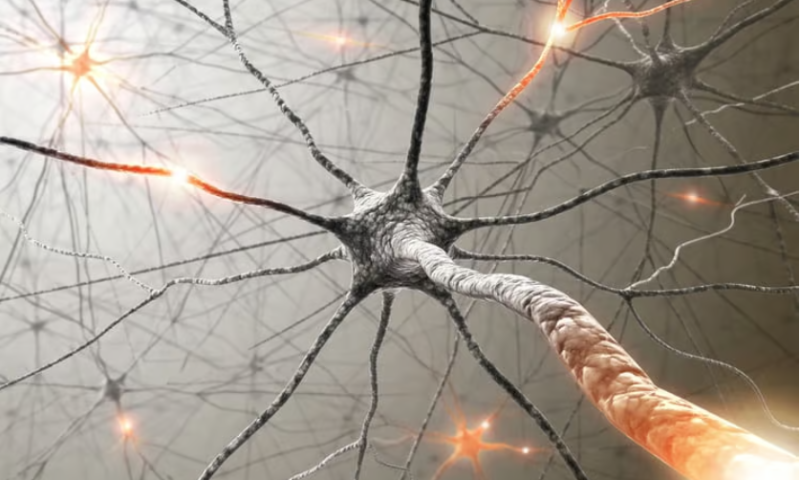Scientists have flipped the script on a common cancer target in an effort to regenerate nerves and protect cardiac tissue from damage.
“There are currently no approved medicines to regenerate nerves […] so there’s a huge unmet need,” study senior author James Phillips, Ph.D., said in a press release. Serious injuries can cause permanent and often progressive damage, with consequences ranging from numbness and tingling to full-blown paralysis.
Findings reported May 24 in Nature by a research team from University College London, which collaborated with pharma giant AstraZeneca on the project through the company’s Open Innovation Program, could provide a new pathway to investigate.
The compound at the heart of the study is 1938, a drug that targets the enzyme phosphoinositide 3-kinase alpha, or PI3Ka. Enzymes in the PI3K family regulate cell growth through their involvement in various cell cycle processes. They are perhaps best known in the pharma world as the targets of PI3K inhibitors, a class of agents used as second- or third-line blood cancer treatments.
But in this case, the scientists’ goal was to raise—not lower—PI3Ka levels. Some studies have suggested PI3Ka inhibition can impair wound healing and prevent the normal processes that limit cell damage following a stroke or heart attack. And previous work from some members of the team have shown that activation of P13Ka signaling pathways can prevent what’s known as ischemic-reperfusion injury—a term for a wave of cell death that occurs when blood flow is reestablished to tissues that were previously cut off from oxygen, like when a patient is being treated for a heart attack or stroke. The phenomenon can slow recovery and leave lasting damage.
Given those findings, the researchers wanted to take a closer look at the therapeutic properties of P13Ka. They started by screening a large library of molecules for ones that were likely to activate the PI3K signaling pathway. After finding a potential contender, they used medicinal chemistry to boost its potency, generating 1938. They then conducted specificity analyses to make sure that the compound targeted P13Ka specifically and not other enzymes in the P13K family. After seeing that was the case, the researchers assessed its effects on embryonic connective tissue cells from mice, finding that 1938 did indeed boost P13Ka activity in the cells.
After conducting more cell analyses to better understand 1938’s activity, the researchers moved on to seeing whether it had any cardioprotective benefits. For that, they turned to rat hearts, looking specifically at whether treating the hearts with the drug could protect them from ischemic reperfusion injury. That appeared to be the case: Rat hearts that were treated with 1938 within 15 minutes of reperfusion had much less cell death than those that were not.
“Given the observed rapid PI3Kα activation observed in both models, it could be envisaged that therapeutic application of a direct PI3Kα activator to a patient undergoing emergency coronary revascularization following myocardial infarction could be cardioprotective and practically feasible in the clinical setting,” the scientists wrote in the paper.
Next, the researchers tested the drug’s ability to protect and heal nerve cells. They started by analyzing its effects on rat neurons in cell culture, finding that it increased the length of new neuronal branches, called neurites, in a dose-dependent manner. Higher doses doubled the neurites’ length within 72 hours of treatment. The team then looked to live mice, using a mouse model of sciatic nerve injury to see whether the drug could aid healing.
Immediately after the injury, the researchers administered a single injection of 1938 into the site of the damage. They also implanted a minipump just adjacent to the injury to continue delivering the drug for the rest of the experiment.
Three weeks after the injury, the researchers assessed how well the mice had recovered by taking electrophysiological recordings from a muscle near the site as they stimulated the nerve. Mice that were treated with 1938 had better nerve conduction than those who were untreated. Analyses of the tissue itself showed that treated mice also had more nerve growth within the muscle, a result that was confirmed to be due to heightened acceleration of natural neuronal regeneration from the drug.
But what about the carcinogenic potential of increasing PI3Ka activity? The researchers noted that only transient activation of the pathway was necessary to elicit its protective and regenerative benefits. On top of that, both mice and people with a rare mutation on the PI3KCA gene—a gene that increases PI3Ka activity—aren’t predisposed to cancer, though those mutations affect different types of tissues than in the cases where other PI3KCA mutations lead to sporadic cancer, they added. Still, “taken together, these data make it less likely that short-term and transient pharmacological PI3Ka activation would induce or promote cancer,” the researchers concluded in the paper.
The team is now working to turn their findings into treatments for peripheral nerve damage as well as to see whether activators of PI3Ka and other kinases in the pathway could be used as therapies for strokes, spinal cord injuries or other forms of damage to the central nervous system.

